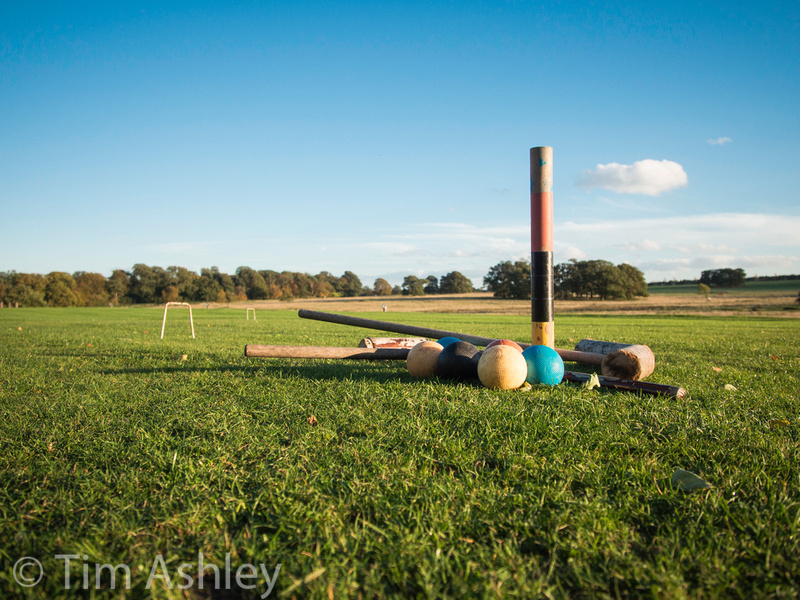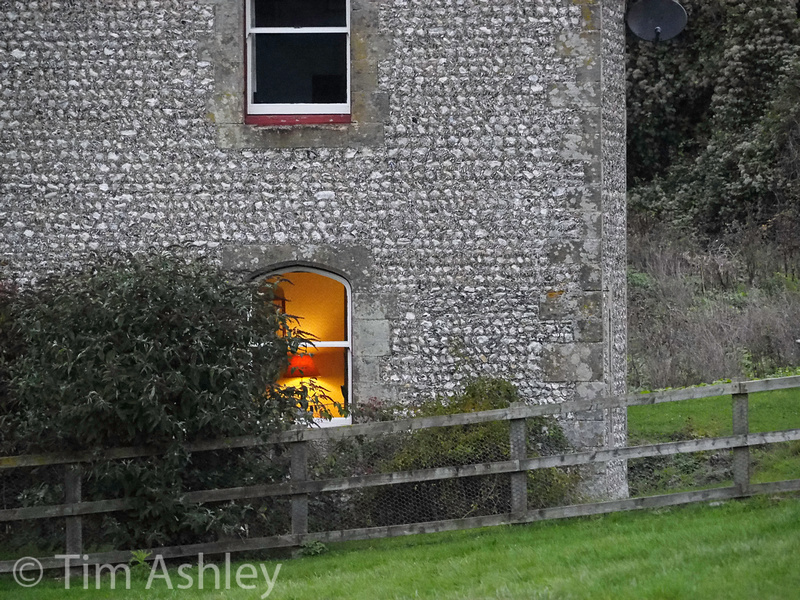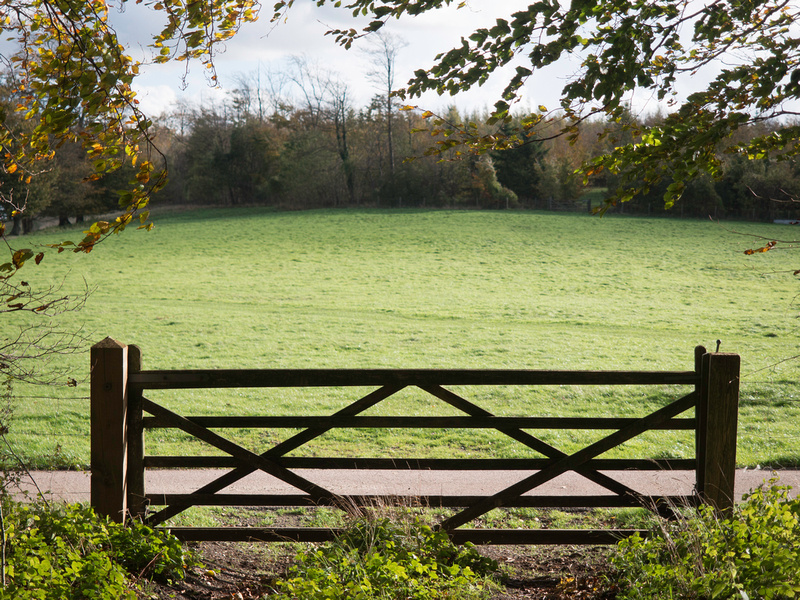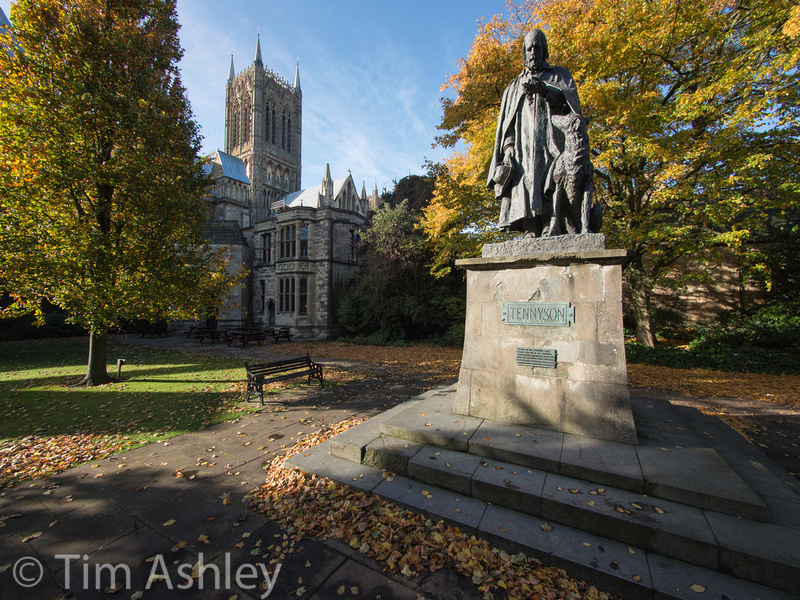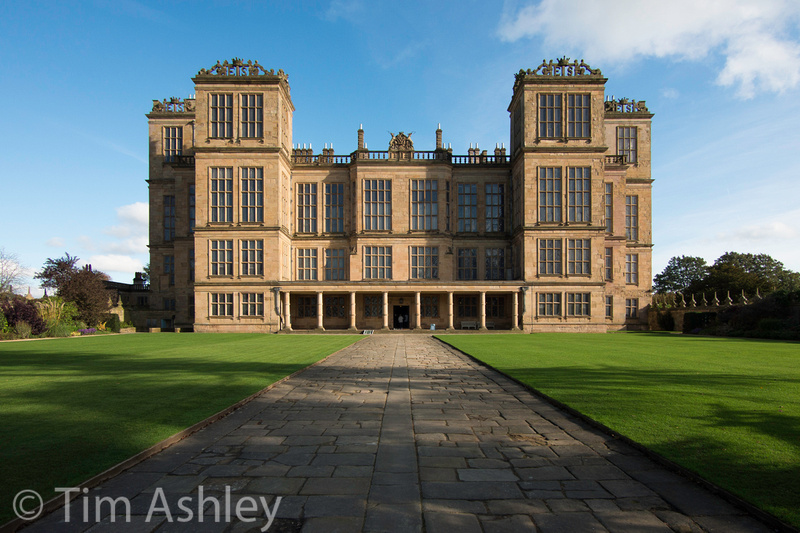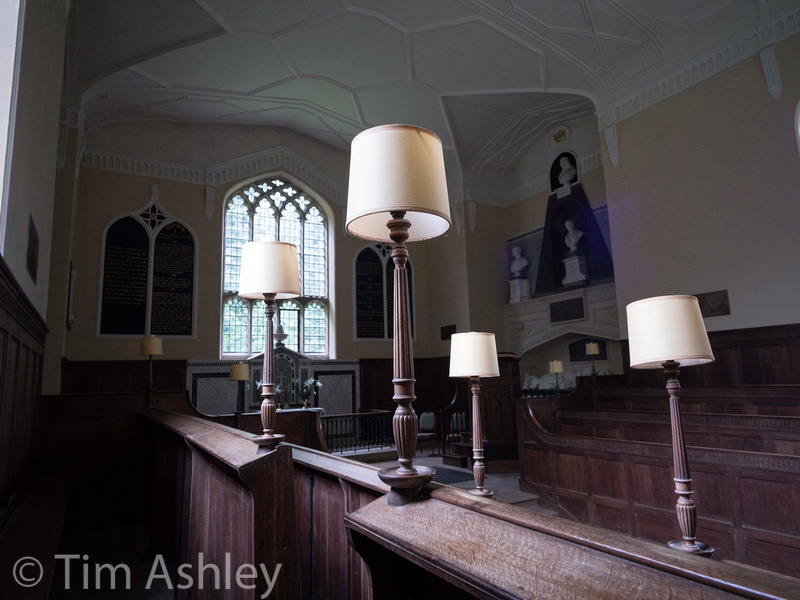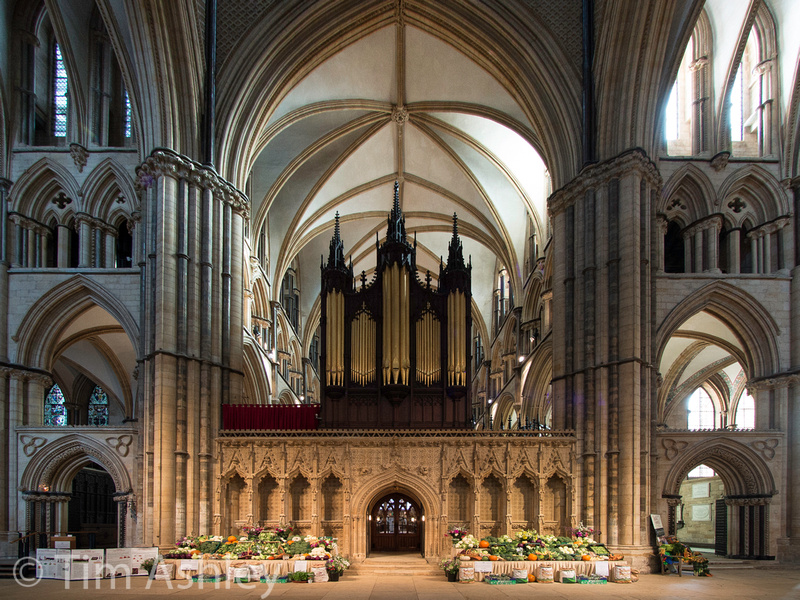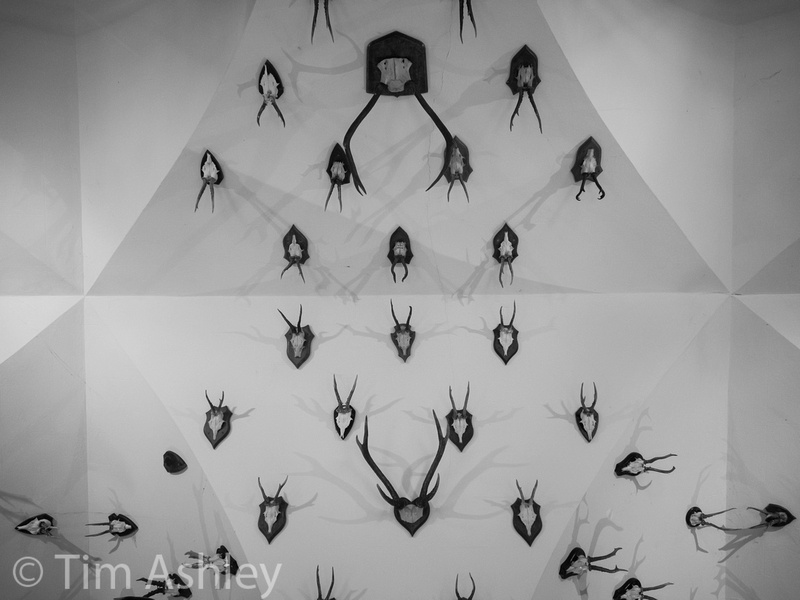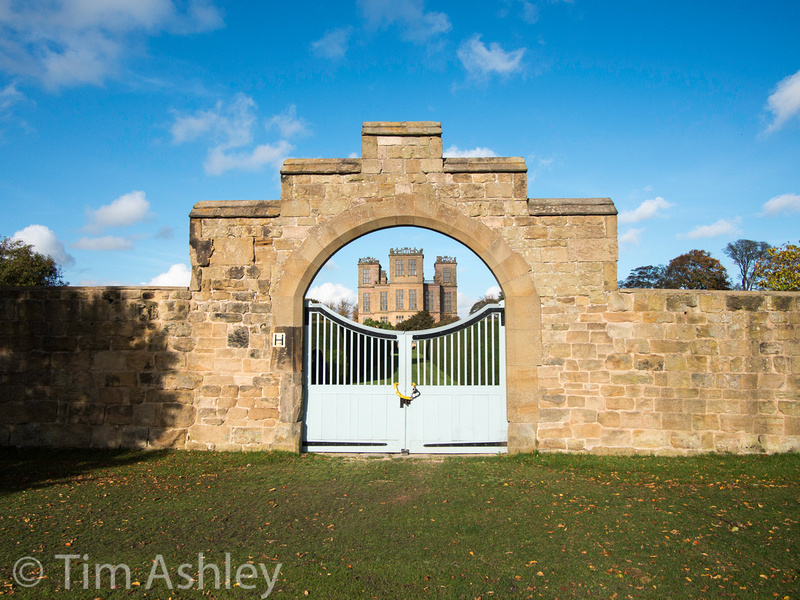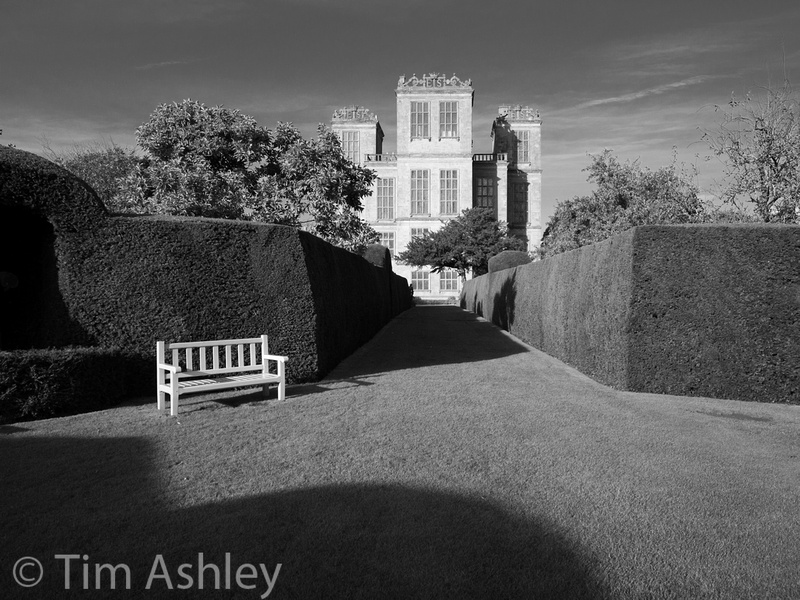The Olympus E-M1: Micro Four Thirds comes of age?A full review of the Olympus E-M1 would take many thousands of words and involve a discussion of many thousands of possible permutations of setup and deployment. I'm not going there: I am not sure I understand the various dial'n'button combinations myself, let alone possess sufficient knowledge to explain and asses them in detail. So instead, this mini-review is going to take the course of a meandering stream, taking in various scenes and vistas but going nowhere fast. Sorry! But on the bright side, DPReview and various other sites have already posted pretty exhaustive analyses if you need to see a breakdown of the Menu structure or a comparative analysis of high ISO performance. Let me begin with a mildly controversial observation: despite the fact that the sensor in the E-M1 is (one of) the best seen in any MFT camera to date, it is only, just, barely, 'good enough' for me. Very often the files look great, really surprisingly good and a great testament to progress in sensor design. But sometimes, even at ISO 200 and correctly exposed, they are really straining to satisfy let alone impress. Like a teenager going to his or her first big 'do' they look convincing only from a distance: close-up inspection reveals a child in adult clothing, a pretender, a wannabe. In fact on some frames, a 100% view of the file looks more like an RX-100 file... more like a very good compact than a professional grade camera. I have thought a fair amount about when and why this is a problem and I look at it like this: take the current 'best of breed' sensor in the sub-medium format sector, the D800. Then compare it to the E-M1. The E-M1 sensor is physically 26% of the size but has fewer pixels. I can't find reliably exact data but as a rough estimate, the pixel pitch of the D800 is 4.9µm and that of the E-M1 3.7µm but in addition, one in sixteen of the E-M1 pixels is given over to phase detect AF and has no recordable light gathering abilities. You might therefore argue that the effective pixel pitch is more like 3.5µm. In other words the 'adjusted' pixel size of the D800 is around 40% larger and, importantly, many people already regard the D800 sensor as a 'oversampling' device. Compare the Oly sensor to the pixel sizes offered by full frame sensors in the 18 to 25mp range and it becomes clear why it has a comparatively modest DXO score. You can't beat the current rules of physics. ISO 8000 with a lot of processing! Whatever the exact comparative numbers, it is clear that the Oly has notably smaller pixels than those of the true Pro category and that some of them are given over to AF, which means that processing the signal off-sensor requires even more interpolation than a traditional de-mosaicing algorithm. This doesn't mean that the results aren't impressive: they generally are. But it does mean that they can't be relied upon to be impressive when the going gets tough. And even with the wind in the right direction, there can be something a little unsettling going on 'under the hood'. Here is a (rather boring!) example: this frame was shot at ISO200 and reasonably well exposed - it has a good looking histogram, though was not exposed 'to the right' because I wanted to preserve some sky detail. If you click through and download the larger, 2304 pixel (50%) size, you will see that the OOF grass areas are quite 'digital' looking - and not in a good way. Remember, this is when viewed at 50% size, equivalent roughly to a 23" print. The file was developed in LR with sharpening of 50/07/70/20 which is my standard input sharpening for low ISO files from this camera and somewhat lower than I would like to be able to give it. Clearly this is no train smash. It's pretty good given the constraints of sensor size and it would make a perfectly reasonable print at 20". It is, for me, 'good enough' - but not by a wide margin and as I have said above, that margin deteriorates fairly quickly as the shooting conditions worsen. So that's the 'less than great' news. The good news is that this rarely matters at all, for several reasons:
My final (for now!) take on the sensor IQ of the camera, therefore, is that for 90% if the conditions under which I am likely to shoot it and 95% of the print sizes I am then likely to want from it, it is at least good enough and often much better. Sensor IQ is only part of the equation however: what about that other vital part of the imaging chain, lenses? Readers of this blog might have already seen my review last week of the new Olympus 12-40 F2.8 zoom. It is a very fine lens indeed. In that review I observed that larger sensored cameras often have problems with the availability of good mid range zooms. There isn't a 'mid' for Nex that convinces me and after much experimenting with full frame, the best I have tried is the 24-70 F2.8 on Nikon. That is a very good lens in almost every respect but it has one major flaw, which is its performance at the widest end, which doesn't sharpen up to the edges until after diffraction has dulled the centre. Even at 28 and 35mm it still needs stopping down to give what I consider acceptable sharpness across the frame. People will no doubt observe that a slightly soft edge at 36mp is often very acceptable when down-resed. I have done it and in brief, for a 24mm FOV shot I would prefer to use the E-M1 with 12-40 than the Nikon system if my aim was for a 20" print with good edges. The system is better for this purpose. And whilst it is certainly true that at longer parts of the zoom range the Nikon system will give overall better results (more and bigger pixels and a lens that has hit its stride) this does, for me, mean that for most of the use-cases where I want a mid-range zoom I choose the Oly system and not the Nikon. My need for clean edges at 24mm FOV is more pressing than my need for huge prints in the rest of the zoom range.* So for me, the E-M1 has ousted a D800E for really quite a lot of the time despite being less objectively capable most of the time. It is as simple as that. Olympus has worked out something that has evaded Sony and some others for ages now: a lot of photographers are buying an entire imaging chain, not just a great sensor and making a really good lens in a key focal length range can obliterate a host of other advantages. An imaging chain is only as good as its weakest link. You would think this to be self-evident. On the subject of other lenses I will remain delphic, not out of hidden wisdom but out of almost total ignorance. People say that the 75mm F1.8 is wonderful and I have received a number of other tips which I am on balance not likely to follow: the scope of this system, for me, is for travel/casual/walkabout/bad weather use and that mostly means mid-range zoom. Honestly, if I am going to a particular place on purpose to take the best quality images of it I can, I will much more likely take a D800 or IQ180 system, depending on how far it is from the nearest car park... I have, however, tried various of my legacy lenses and there are some interesting finds:
I will probably try the Oly 9-18mm and I will certainly buy their new Pro 40-150 F2.8 when it launches but otherwise I have no desire to get into the rest of the lens range: for me this is not a broad system camera, it is a great way of covering the FF equivalent of 18-300mm with good quality stabilised zooms in a lightweight travel and walkabout system. For 'proper' systems, if you have the financial luxury of owning more than one, there are bigger and better choices with bigger and better sensors. Let's take a quick look at the Purple Problem on 7-14mm Panny. Here are two examples: Even at web sizes (and by clicking the images you'll go to a gallery that gives you the option of downloading them at 50% of original size) you can see the purple stains that this lens produces so often on the E-M1. It is really annoying because it is a tremendously impressive piece of glass but truth is, you just can't trust it on the Oly. This leads me to a whine: the MFT consortium was originally set up with the apparent consumer benefit of interchangeability of lenses and bodies between participant companies. It just doesn't work and a lot of the glass I purchased in the belief that it would will now need to be sold. This is particularly annoying because MFTs design philosophy is to do 'less in the lens and more in the processing' - in other words, lens designers can, whilst making their usual set of compromises, afford some laxity on things like distortion and aberrations knowing that they will gain size and weight benefits or higher maximum apertures. But that does depend on the 'problems' being corrected in camera and the fact is that MFT cameras will correct other manufacturers' distortions but not their aberrations. The purples you see above are essentially uncorrectable in post. I don't know how Panasonic manages to do in camera what can't be done in Lightroom but for whatever reason it is very irritating. Beware, therefore of buying into the E-M1 if you are an existing Panny user with a bag of lenses (or vice versa) because it might not work well for you. Next up: the farrago of the E-M1 Auto ISO system. As noted above, a major saving grace of the E-M1 is the IBIS, which allows for much lower ISO values to be used than you might expect. This can, in many use-cases, do a lot to level the playing field with other, larger sensored systems where certain key lenses (the Nikon 24-70mm F2.8 for example) do not offer stabilisation. And yet Olympus has decided to use an Auto ISO system that seems determined to stop the user from benefitting. The D800, for example, allows you to specify whether you would like normal, fast, faster, slow or slower as your shutter speed when you are configuring your Auto ISO behaviour. An example: with a 24mm lens it will allow a shutter seed of 1/25th if you set normal. If the light is too low, it will up the ISO for you. But if you set the option to Fast, it will allow no lower than 1/50th, and Faster allows 1/100th. Smart, eh? This allows the user to decide based on the size, shape and weight of the lens, on his or her own tendency to shake, and on the degree of perfection of stillness required in the shot, what level of shutter speed protection is required. The Oly offers no such option. Instead it relentlessly chooses shutter speeds far higher than are actually needed and therefore habitually selects too high an ISO, thereby pissing away the advantage that all that technology should be giving it. Madness. It generally selects a shutter speed of 'twice the focal length' - so for a focal length of 40mm results in a minimum shutter speed of 1/80th**. In an unstabilised system high resolution digital system it is considered good practice to do exactly this - but the IBIS is claimed to offer several stops of benefit! I have found a good workaround. I set the camera to Manual mode, then use the Button/Dial/Lever configuration to give me a setup that allows the front and rear wheels to control shutter speed and aperture. I then set the rear dial, when used in 'selector switch two' position, to give me control of ISO. I then choose my preferred shooting aperture, set the shutter speed to the lowest I can confidently get away with with IBIS on, then flick the selector to position 2 and use the ISO control to change the exposure. Doing it this way allows you to see in real time a readout of your under/overexposure and so you can effectively use the ISO wheel to control exposure compensation. But it shouldn't have to be this way: it is fiddly, stupid and annoying. Talking of control wheels and switches and menu options... ugh. The camera is touted by its fans as being endlessly configurable. It isn't. It allows for about a billion different configurations of its many dials, switches and buttons and even for a very experienced photographer it can take a very long time to find one that suits them. Now this would be fine were it as configurable as one would like - a fair price of steep learning curve in exchange for ultimate personalisation. But I keep finding simple things that I would like to be easily able to do that I cannot easily do. For example, I always shoot RAW and I nearly always shoot AUTO WB, knowing that I am going to tweak in post anyway. Not wanting to control WB in camera often, I would like to configure the control wheels so that neither of them changes WB. But it can't be done unless you also lose wheel control of ISO. Which means that I spend my life accidentally changing WB. Grrrr. But the biggest 'switch and dial' gotcha is the positioning of the power switch on the left rather than the right of the body. If I ever give up on the E-M1 it will be for this reason. My muscle memory, deeply programmed by almost every camera I have owned, is to lift the camera to my eye with my right hand whilst simultaneously using my right index finger to turn it on. With the E-M1 this is not possible. Try telling that to my autonomous nervous system... Finally, a mildly philosophical observation: the E-M1 doesn't know who it is for. In an effort at at capturing every possible user segment, it has piled in a load of stuff that I and a lot of other people will not use. In-camera HDR, 'Art' filters, Scene Modes, Picture Stories - all sorts of low-end consumer bollocks that gets in my way. It gets in my way on the buttons and dials and it gets in my way in the menus. Now I know that this all costs nothing significant for Oly to add, and might well broaden the appeal of the device so much that the extra sales cause unit costs to plummet, benefiting me. I do understand. But it it still really irritating and it makes the camera rather schizophrenic: one minute it's a hardy, fast shooting, built-like-a-tank pro machine for those who want to travel light - and the next minute it's a Fisher Price device for near-children. Sometimes I just have to hold my M240 for a minute to sooth the irritation. With all that off my chest, it is back to Praise Mode for my conclusion. The camera is mostly gorgeous, mostly perfectly balanced and thought out, mostly excellent at what it does and mostly, as I have argued above, at least 'good enough' in terms of IQ. Paired with the excellent 12-40 F2.8 zoom it provides me with something I have never before found: A small and light camera that lets me do almost anything I want in any weather and get results that meet my minimum requirements. Honestly, if it weren't for the above mentioned lens, I would enjoy but not keep the E-M1. And if the Sony A7R is as good as I hope (it might well be) and their stabilised F4 24-70 zoom is as good as I need (frankly I doubt it will be) then I might have a difficult choice to make. But at least for now, Olympus has provided a system that does, for me, things that no other system can do. If, for this reasonably dedicated photographer, the E-M1 and its attendant cast of lenses can crowd out a Nikon D800 system for a lot of uses, then Micro Four Thirds can indeed be said to have come of age - for me. And I suspect for quite a few others too.
This site is not for profit but I do support the charity Photovoice. I wrote about it in depth a while back and that article is here. If you have found this article useful and are feeling generous, I would hugely appreciate a donation to the charity, even just a pound or a dollar: every little helps. You can donate here and the Virgin Giving site is secure and takes cards and PayPal. The Gods of Great Photography will smile on you if you donate. I promise.
* there's a thread on Reddit at the moment that clearly demonstrates how keen people are to shoot first and read later so please, if you are tempted, don't! ** an arcane workaround involving changing the default minimum shutter speed for flash shots can alter this slightly but I wouldn't bother. I should also note that the minimum shutter speeds it chooses for longer focal lengths seem to be more relevant possibly because IBIS offers fewer stops of benefit with longer focal lengths? Comments
Rhys(non-registered)
Hi. Regarding shutter speed with legacy lenses. On my E-M10 it is important to set the correct focal length of a legacy lens, NOT the equivalent. In other words a 50mm Pentax 50mm f1.7 would be input as 50mm not 100mm. As well as operating the IBS correctly it will ensure that a minimum shutter speed is observed in tandem with auto ISO. The setting is under the camera 2 menu - Image stabiliser, still picture, S-iS Auto, bottom menu - Focal Length. Set and store.
I have FN 2 set to magnify and IS starts when selected. Quite simply amazing focussing with rock solid stability.
Thanks Martin - someone pointed that out to me at the time and if I recall correctly I tried it but for some reason or other it either didn't work or didn't work consistently - but I'm afraid I no longer have the camera so I can't re-try it. I hope the tip might be useful to other readers though!
Martin K.(non-registered)
There is a kind of workaround for the auto iso problem. It does not consider focal length, but otherwise helps a lot, if you want lower shutter speeds before upping the iso
The x-sync low limit in the flash menu is used as the lower limit for iso increase. Sounds wierd, but it is, try it. Maybe it is a hidden feature. If you set x-sync low to say 1/20 sec and auto iso, iso will be kept much lower and will be only increased, if shutter speeds would get longer than 1/20 s. This is true for all Olympus mFT cams I think. Maybe this helps with your problem.. Martin.
I need to write a piece about that one day. Best simple test is to find a planar facade and shoot it from dead on, at all major focal lengths and apertures, and see if it is equally sharp on left and right edges. Do the same with a distant landscape scene. Do the same close up to a brick wall if it is very flat and you are confident you can get square to it. Beyond that, you could spend an awful lot of time testing but even just the facade test will tell you if there's an obvious problem. However, this lens seems to be well QC's so I think you'll be OK!
Scott(non-registered)
On a serious note, Oly 12-40 coming tomorrow; any words of wisdom for determining if I have a good copy? Is your method here in the blog somewhere? Thanks Tim.
No comments posted.
Loading...
|


